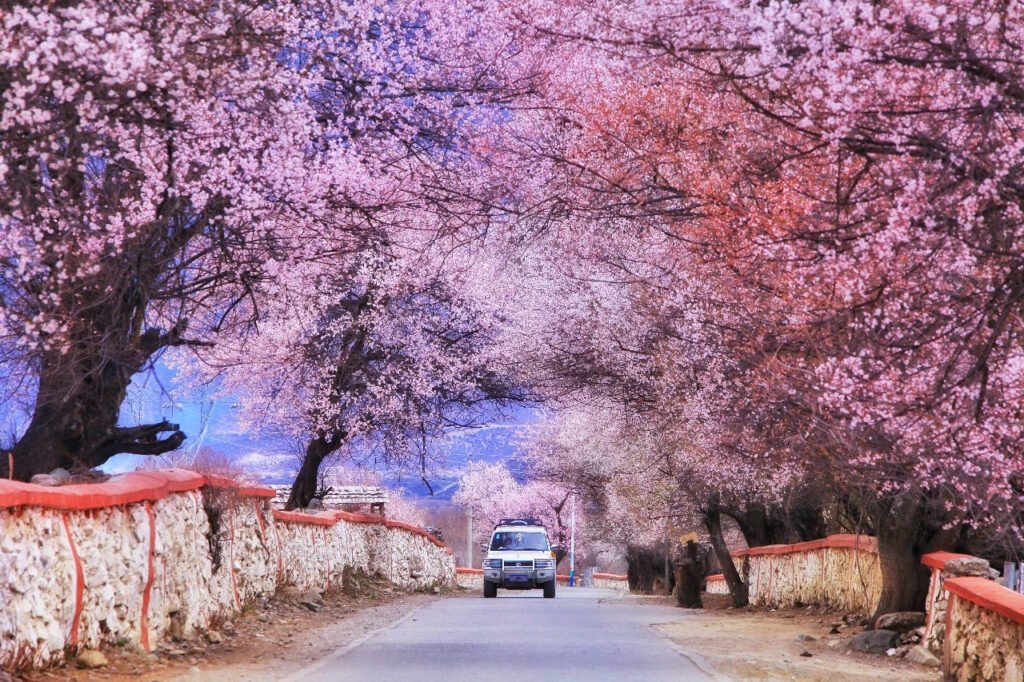Unforgettable Tibet: A Traveler’s Guide to High Altitude and Cultural Respect
Understanding the Challenge of High Altitude
Tibet, a breathtaking destination, offers an unparalleled travel experience, soaring above 3,000 meters in elevation. However, this magnificent height comes with a challenge – altitude sickness. Common symptoms include headaches, nausea, dizziness, fatigue, and shortness of breath. These symptoms can affect anyone, regardless of fitness or age, due to the reduced air pressure and lower oxygen levels at high altitudes.

Proactive Measures for a Healthy Trip
Prevention and management of altitude sickness are key to enjoying Tibet’s wonders. Staying hydrated is paramount. Prioritize drinking ample water before and throughout your journey. This simple yet effective step aids your body in acclimatizing to the thinner air. It’s also advisable to avoid alcohol and smoking, as they can intensify altitude sickness symptoms.
Embracing Cultural Etiquette in Tibet
Respecting Local Customs and Traditions
Tibet’s rich culture and traditions are integral to its charm. As a visitor, showing respect and sensitivity to these customs enhances your experience and fosters mutual respect.
Exploring Tibet is not just a journey through picturesque landscapes, but also an opportunity to immerse yourself in a unique culture. By preparing for the high altitude and respecting local customs, you ensure a memorable and enriching trip to this incredible region.
Remember, a journey to Tibet is more than a vacation – it’s an adventure into the heart of a vibrant culture, high above the ordinary. Prepare well, and embrace the extraordinary experience that awaits in Tibet!
Journeying Through Tibet: Health and Cultural Awareness for a Fulfilling Experience
Dietary Choices for Elevation Adaptation
Embarking on a trip to Tibet requires mindful preparation, particularly in terms of diet. Opting for light, high-carbohydrate meals is recommended. These foods provide essential energy while minimizing digestive strain, an important factor in high-altitude locations like Tibet. A diet rich in carbs helps in better acclimatization, ensuring a more comfortable and enjoyable trip.
Rest and Medical Consultation: Key to Acclimatization
Adequate rest is crucial before and after reaching Tibet. This allows your body to gradually adjust to the high altitude, reducing the risk of altitude sickness. For travellers with pre-existing health conditions, a consultation with a doctor is highly recommended. This step is vital for ensuring a safe and healthy journey, especially when dealing with the unique challenges posed by Tibet’s high elevation.
Honoring Tibet’s Cultural and Spiritual Heritage
Etiquette in Sacred Spaces
Tibet’s rich cultural tapestry is deeply intertwined with its spiritual heritage. Observing local customs, especially when visiting temples, monasteries, and other religious sites, is essential for a respectful and enriching experience.
Respecting Sacred Practices
- Shoe, Hat, and Sunglass Removal: As a mark of respect, remove these items before entering sacred spaces.
- Clockwise Circumambulation: Walking clockwise around stupas and prayer wheels is considered auspicious and respectful.
- Reverence for Religious Objects: Avoid touching or disturbing any religious artefacts or statues, as they are sacred to the Tibetan people.
Photography and Donations: Mindful Interaction
Always seek permission before taking photographs, as certain areas may have restrictions. Additionally, consider donating to these spiritual sites. Such contributions help in the preservation of these spaces and support the local community, fostering a sense of mutual respect and appreciation.
Your journey to Tibet is an opportunity to explore a world of high-altitude wonders and profound cultural richness. By embracing appropriate health precautions and showing deep respect for local Buddhist customs, you ensure a journey that is not only memorable but also meaningful. Dive into the heart of Tibet with sensitivity and awareness, and experience the magic of this extraordinary land!
Essential Tibet Travel Guide: Adapting to Altitude with Respectful Attire
Dress Code: Embracing Modesty in Tibet
One of the key aspects of cultural etiquette in Tibet is dressing modestly. This practice is not just about conforming to local norms but also about showing reverence for Tibetan culture. Avoid wearing revealing or tight clothing in public places. Opt for attire that is respectful and considerate of the local traditions, enhancing your experience by blending in respectfully with the community.
Bridging the Cultural Gap Through Language
The Power of Basic Tibetan Phrases
Language is a bridge that connects different cultures. Before embarking on your Tibetan adventure, learning a few basic Tibetan phrases can significantly enrich your experience. Simple greetings like “Tashi Delek” for hello, “Kadrin Che” to express gratitude, and “Gale phay” for goodbye, are more than mere words; they are gestures of respect and appreciation for the local language and culture. These phrases help in breaking down barriers and forging meaningful connections with the local people.
Preparation and Respect for an Unforgettable Tibetan Experience
Preparing for the unique challenges of Tibet’s high altitude and respecting the local culture and customs are crucial for a fulfilling travel experience. Dress modestly, learn some local phrases, and follow health guidelines to combat altitude sickness. These steps not only ensure your safety and well-being but also deepen your understanding and appreciation of Tibet’s rich heritage.
For further assistance or queries regarding your Tibet tour, feel free to reach out. Our dedicated team is committed to helping you plan an unforgettable journey into the heart of Tibet, where adventure meets cultural immersion. Let us guide you through this extraordinary land with care and expertise.


